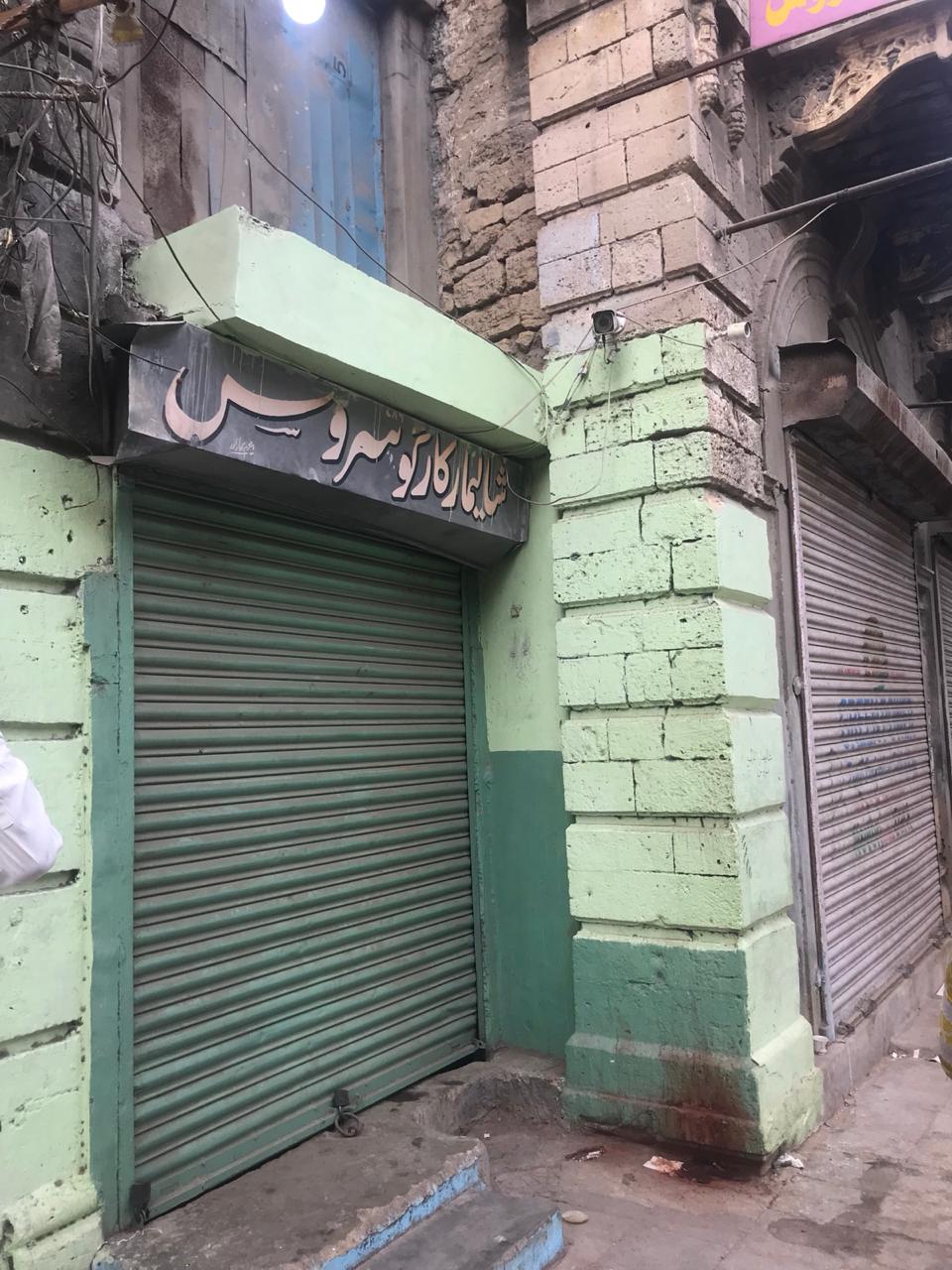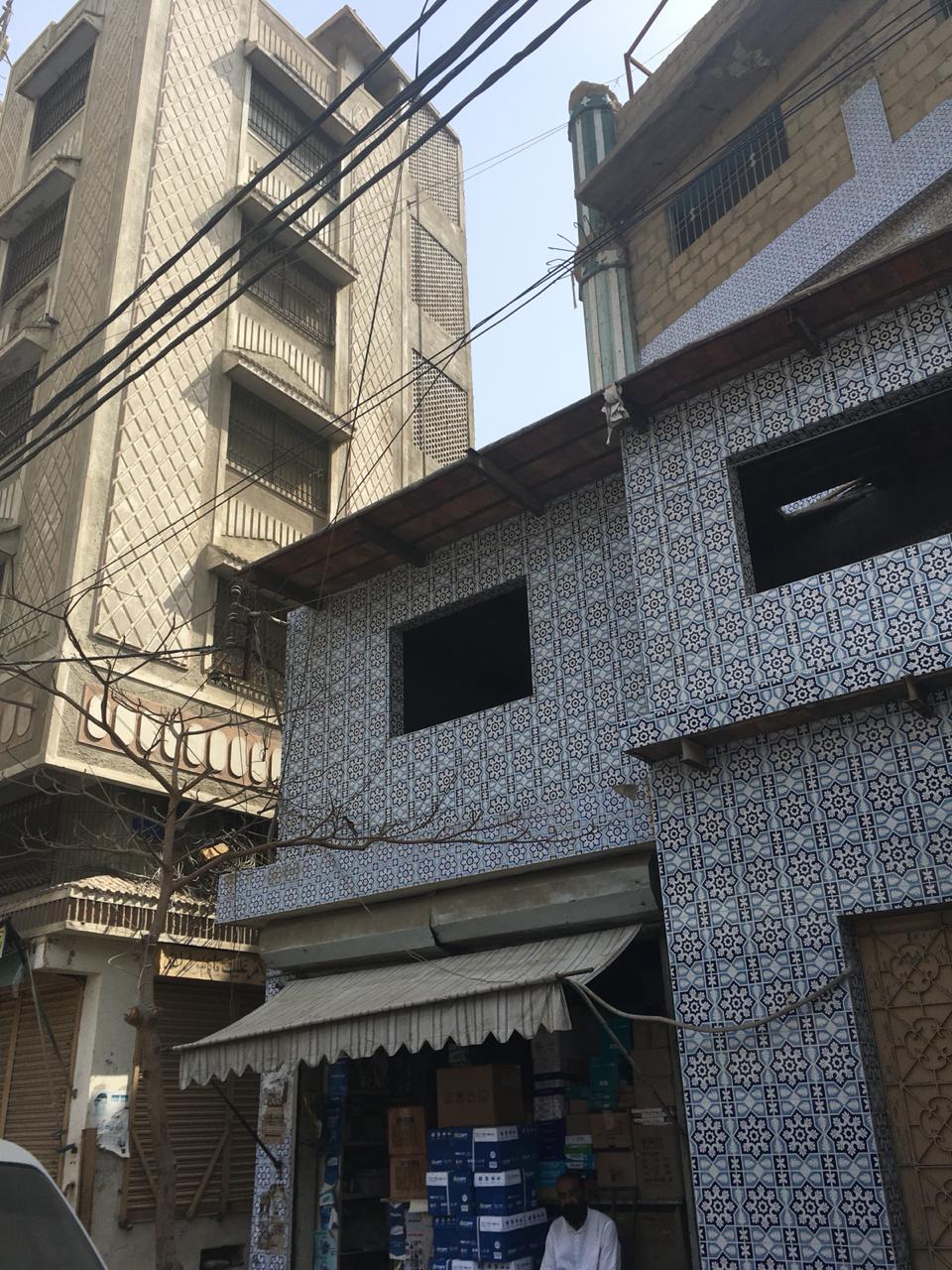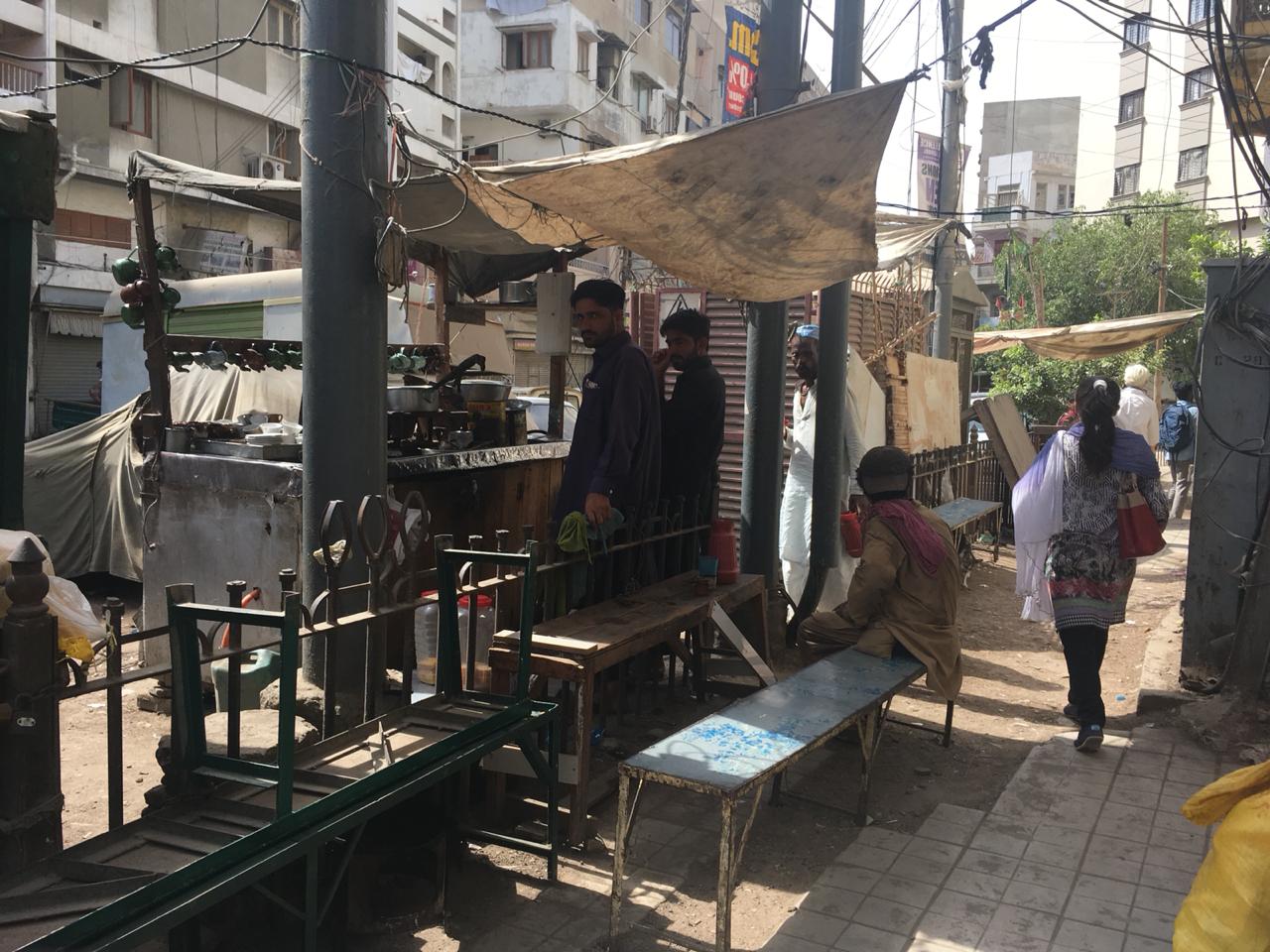Written by Rohama Saqib
The Lyceum School, Karachi
While trekking through the highly territorialized streets of Old Town Karachi, one thing which was particularly noticeable was that territorial marking was nourished by diverse architectural designs. Whether it be grand scale territorialization or small, artificial constructions are a rudimentary human need. On top of that, political, cultural and social class differences were apparent in the way that various people valued their perceptions of space and how they interacted with their built environment to set boundaries. I witnessed many and various territorial strategies and tactics being followed to prevent crime and encroachment from neighbours in order to achieve stabilization for community safety.
Popularly noted was that some inhabitants of the area would display proxemic behaviour by marking-off their boundaries in physical ways creating their own separate identity and fulfilling desires of place attachment and personalization. They would do this by way of painting or lining tiles on a portion of their own zone which was part of a larger residential building, customizing casements, painting store shutters or hanging a billboard over their store, suspending fabric on rope over a specified area and utilizing miscellaneous building materials to dictate their spaces. In this way each person was able to articulate their space by creating a visible bubble. Although there were no official written rules regarding territoriality other than those of prominent buildings, there were masqueraded governing codes that everyone unknowingly followed. Residents would be sure to not tresspass one’s property by carefully outlining their intimate space after which they would paint the area with funky colours such as muted greens, lavenders and hot pinks. However, I also detected the great extent to which negligence existed as residents would only clean their territories putting others at an unfavourable position. Moreover, areas under state-owned businesses would be well-maintained as opposed to its surrounding areas- there was often no regard for others. Those with a higher social stature had decorative environments while lower classes could not manifest their spaces creatively.
Territorial marking also shaped and affected local people’s accessibility to certain areas by exerting varying degrees of control. For instance, Banks and Police Stations displayed a high-level of territorial behaviour by establishing greater security for protection. They constructed a defensive sphere of space, commonly using wrought iron gates, brick masonry and barbed wire – the use of such materials reproduced elements essential to security. They further reinforced territorial marking by using a guard to ensure the social order of space. Defining territory defensively in the way that these banks and police stations did would prevent intrusion and minimize the propensity of crime or robberies- becoming almost impenetrable. Furthermore, some zones under enterprisal control monopolized the area on the strength of formal artificial barriers. Such privatisation of space and establishment of borders is necessary for effective control and an indication of one’s ‘ownership’. Nevertheless conversely, areas open to the public did not delineate such bold boundaries which reflected their self-interests and encouraged accessibility by allowing locals to interact with their built environment. Amongst the diversity of buildings, nature was also integrated into the territories giving the places identities and facilitating place attachment.
Therefore, territorial marking was perceptible through the complexities and distinctness of the areas- each person had a sense of place and familiarity based on their own self-interests, identities and variations of architectural style. Everyone was in close harmony- pursuing their own responsibilities.





